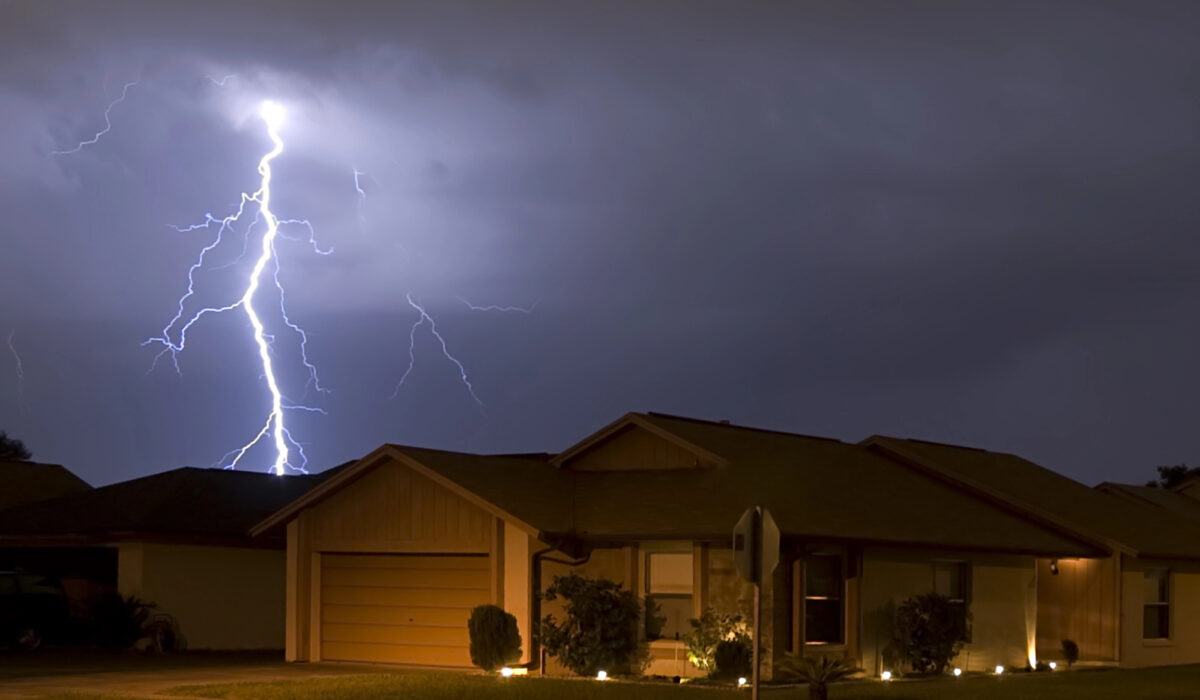- By Phoenix Roofing
- ParmaRoofingCompany
- 0 Comment
The Impact of Summer Storms on Your Roof
Summer is a season of warmth and outdoor fun, but it also brings a higher likelihood of severe storms. The impact of summer storms on your roof can pose significant threats. Understanding the impact of these elements can help you take steps to protect your roof and ensure it remains in good condition.
The Effects of Wind on Your Roof
High winds during summer storms can cause considerable damage to your roof. Here’s how:
Looking for expert roofers in Parma Heights?
Phoenix Roofing & Solar is your #1 Parma roofer.
Make an appointment now!
1. Uplift and Detachment
Strong winds create an uplift force that can lift shingles and other roofing materials away from the roof deck. Once the materials are lifted, they can be completely detached, leaving parts of your roof exposed to the elements. This exposure can lead to water infiltration and subsequent damage to the roof structure and interior of your home.
2. Wind-Driven Debris
Winds can carry debris, such as branches, leaves, and other objects, which can strike your roof with significant force. This debris can cause physical damage to shingles, tiles, and other roofing components, creating vulnerabilities that can lead to leaks and structural issues.
3. Shingle Curling and Peeling
Even if shingles are not completely detached, high winds can cause them to curl or peel back. This curling weakens the shingles’ ability to protect your roof, making them more susceptible to further damage from rain and hail.
The Impact of Heavy Rain on Your Roof
Summer storms often bring heavy rainfall, which can pose several challenges for your roof:
1. Water Infiltration
If your roof has any existing vulnerabilities, such as cracked shingles or damaged flashing, heavy rain can lead to water infiltration. This infiltration can cause water damage to your roof deck, attic, and interior spaces, leading to mold growth and structural issues.
2. Clogged Gutters and Downspouts
Heavy rain can overwhelm your gutter system, leading to clogs and overflows. When gutters and downspouts are clogged, water can back up and seep under the roof edge, causing damage to the roof deck and fascia. Proper gutter maintenance is essential to prevent water-related roof damage.
3. Pooling Water
Flat or low-slope roofs are particularly susceptible to pooling water during heavy rain. If water is not properly drained, it can accumulate on the roof surface, increasing the risk of leaks and structural damage. Ensuring proper drainage and regular roof inspections can help mitigate this issue.
The Impact of Hail on Your Roof
Hailstorms can cause some of the most severe damage to your roof:
1. Shingle Damage
Hailstones can vary in size, but even small hail can cause damage to roofing materials. Hail can crack or puncture shingles, leaving your roof vulnerable to water infiltration. Larger hailstones can cause significant dents and break shingles, necessitating immediate repairs.
2. Granule Loss
For asphalt shingles, hail can dislodge the protective granules that coat the surface. These granules are crucial for UV protection and overall durability. Loss of granules can accelerate the aging of shingles and reduce their effectiveness, making your roof more prone to leaks and other issues.
3. Impact on Flashing and Vents
Hail can also damage flashing, vents, and other roof components. Damaged flashing can lead to leaks around chimneys, skylights, and other roof penetrations. Inspecting these areas after a hailstorm is essential to identify and address any damage promptly.
Tips for Protecting Your Roof from Summer Storms
To safeguard your roof against the damaging effects of summer storms, consider the following tips:
1. Regular Inspections
Schedule regular roof inspections, especially after severe weather events. A professional roofer can identify and address any storm-related damage, ensuring your roof remains in good condition.
2. Reinforce Roofing Materials
Consider upgrading to impact-resistant roofing materials that can better withstand high winds and hail. Discuss your options with a roofing professional to choose materials that offer enhanced protection for your specific climate.
3. Maintain Gutters and Downspouts
Keep your gutters and downspouts clean and free of debris to ensure proper drainage during heavy rain. Properly functioning gutters can prevent water from backing up and causing roof damage.
4. Trim Overhanging Branches
Trim trees and branches that overhang your roof to reduce the risk of wind-driven debris causing damage. Keeping branches away from your roof can also prevent clogging of gutters and downspouts.
5. Secure Loose Shingles and Flashing
Regularly inspect and secure any loose shingles or flashing. Addressing minor issues promptly can prevent them from becoming major problems during a storm.
Conclusion
Summer storms, with their high winds, heavy rain, and hail, can pose significant challenges for your roof. By understanding how these weather conditions affect your roofing materials and taking proactive measures to protect your roof, you can minimize damage and extend its lifespan. Regular inspections, proper maintenance, and timely repairs are essential to safeguarding your roof against the adverse effects of summer storms. Investing in these preventative measures can save you time, money, and the hassle of dealing with extensive roof repairs in the future.

